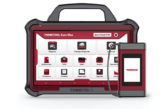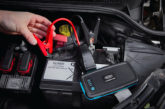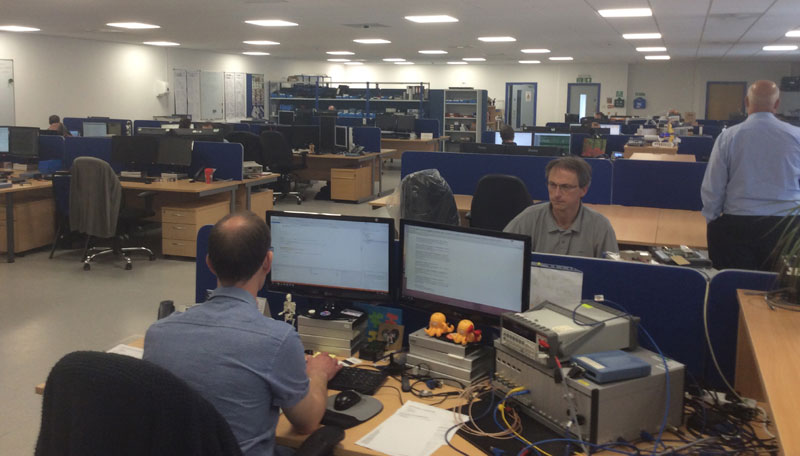
Without doubt, there is no getting away from the fact that during diagnosis you are going to need an oscilloscope.
Whilst it may seem daunting at the time, help is at hand. Pico Technology offers range of technical support options to help with any issues technicians may have.
The Pico website has a wealth of information to get you started and the company offers all technical support without charge. Automotive Application Specialist, Steve Smith, encourages users to get in touch if they have an issue “I often say ‘there are no stupid questions’, and I stand by this wholeheartedly.”
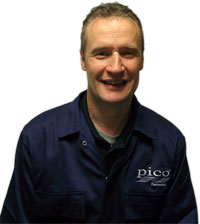 Steve Smith is a former Toyota Master Technician and winner of the 2013 Top Technician competition. He now puts his extensive knowledge to good use as an Automotive Application Specialist for Pico Technology.
Steve Smith is a former Toyota Master Technician and winner of the 2013 Top Technician competition. He now puts his extensive knowledge to good use as an Automotive Application Specialist for Pico Technology.
PMM – How many people are in the support team?
Steve Smith – “Automotive technical support is predominately two people in the UK covering the world except North America and Canada where our US office has their support needs covered
“IT support is via six technical support staff who provide in depth support of hardware, software and interpretation of data captured.
“We can also call upon hardware and software engineers to assist with issues that may require ‘system’ operation knowledge, so you could argue there are 16+ members of the support team ready to help in their specific area of expertise.”
PMM – What is the main purpose of your role?
SS – “My role predominately is to support and assist our automotive scope users and customers with any concerns they have surrounding Pico.
“I have been a technician for over 30 years, using numerous scope throughout diagnostic routines and this of course lends itself to supporting others, as I know only too well how difficult the role of a technician can be.”
PMM – What’s your favourite part of the job?
SS – “Without doubt, assisting others to resolve diagnostic issues using PicoScope. This may sound like a cliché but far from it. The automotive trade has given me a career and a stable living since leaving school with very little in the way of academic qualifications.
“Having taken from the trade for many years, I find myself in the unique position of ‘giving back’, assisting and training others to better equip themselves for current and future diagnostic routines.
“There is no better reward than empowering people to excel in their roles having supported them through a diagnostic routine by applying theories and Pico measurement techniques. This too expands my own knowledge and you soon discover that we to live and learn together.”
Name – Steve Smith. Job Title – Automotive Application Specialist. Time at Pico – 2 years, 9 months
PMM – Describe a typical day for you. What do your daily tasks include?
SS – “Daily tasks vary depending on whether the day is office based or offsite. Office based will involve the handling of multiple technical enquires via email’s, forum posts, helpdesk and of course, the telephone as its good to talk.
“Whilst office based, the creation of editorial (such as the series of Scope School articles ran in PMM), case studies, application notes, and help files is a continual process that requires numerous hours of concentration to ensure accuracy and quality.
“Offsite will involve assisting customers with automotive technical issues, training visits to Vehicle Manufacturers, supporting trade events both UK and abroad, development of new products, product research and the constant search for new and improved automotive application of PicoScope.”
PMM – What sort of training do you undergo? Is there specific training when a new product is launched?
SS – “I have attended both Frank Massey’s and James Dillon’s scope training and have always included a scope during diagnosis to provide evidence of measurements taken. The continual use of PicoScope over many years is what pulls the best from the theory obtained during training.
“Training is a continual process with Pico. With regards to new products, we are included from the outset of development and form part of the test process for all automotive products. By the time of launch, we are fully conversant with the product as we have been involved in the development process.”
PMM – What proportion of queries are over the phone and how many are via the online chat and online forum? Has this trend changed during your time in the role?
SS – “Phone queries make up a very small percentage of technical support enquires. I have found the majority of calls are Friday afternoon when technicians find themselves with a window of opportunity to experiment with Pico at the end of a crazy week.
“The majority of enquiries (around 90%) are via email, Help desk and the forum. The trend has always been the same in my short time here at Pico.”
PMM – Is the service you provide subscription based, or is it open to anyone?
SS – “Our service is open to anyone, technical support is free.”
PMM – What are the most common queries you hear from customers? Can you provide a couple of examples?
SS – “Enquires are varied and there is no one common theme. Enquires we receive are always relevant to the customers’ ability.
“For example: A new user may be unaware of the waveform library feature of PicoScope when looking for comparison waveforms or may not have used the convenient features of Pico Diagnostics that require minimal input from the user to obtain valuable test results.
“An advance user may wish to discuss the intricacies of a captured waveform where together we ‘chew the fat’ over what we believe to be visible based on our knowledge of the system under test.”
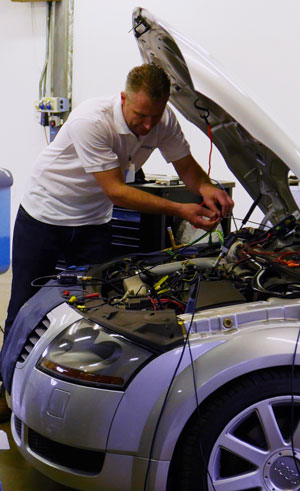 PMM – What process is undertaken when a query comes in?
PMM – What process is undertaken when a query comes in?
SS – “The process depends on the route the enquiry arrives at Pico. Direct to my email will be dealt with by me, but via the Helpdesk will first go via the Helpdesk manager/team.
“Here the enquiry will be assigned to the most relevant support team member based on their area of expertise. Should the enquiry be of a specific automotive nature it will be assigned to either Phil or I where we then provide the necessary support.
“For example, we were recent asked ‘When using Pico Diagnostics relative compression test, how is cranking speed obtained?’
“Here the customer is required to enter the number of cylinders for the engine under test. During the craning phase the software calculates the time taken for the battery voltage to fall and recover twice during craning (for a four cylinder engine).
“This will indicate to the software that one crankshaft revolution has been completed. Armed with this information, the frequency of one crankshaft revolution can be measured and multiplied 60 to obtain and provide RPM (cranking speed to the user).
“Enquires requiring further assistance will often surround intervention from the hardware or software team.
“For example, customers using the NVH software with an unsupported OBD device have the opportunity to activate a software feature called “OBD logging”. This logging feature will provide the software engineers with additional OBD communication activity during customer connection.
“Our customer can then send their log/trace file over to the engineers where they can plot their communication events and provide support and advice for the communication failure.”
PMM – Have you taken any quirky or unique calls?
SS – “I have received a marriage proposal from one male customer after helping him resolve an ongoing issue with a misfire (mechanical issue). Unfortunately I had to decline!”
“I have to say, when we resolve customer issues it really does boost your day knowing that you have assisted the technician and ultimately their customer.
“We are often invited over to workshops we have assisted as ‘the kettle is always on if your passing’ to quote a number of invites.”


